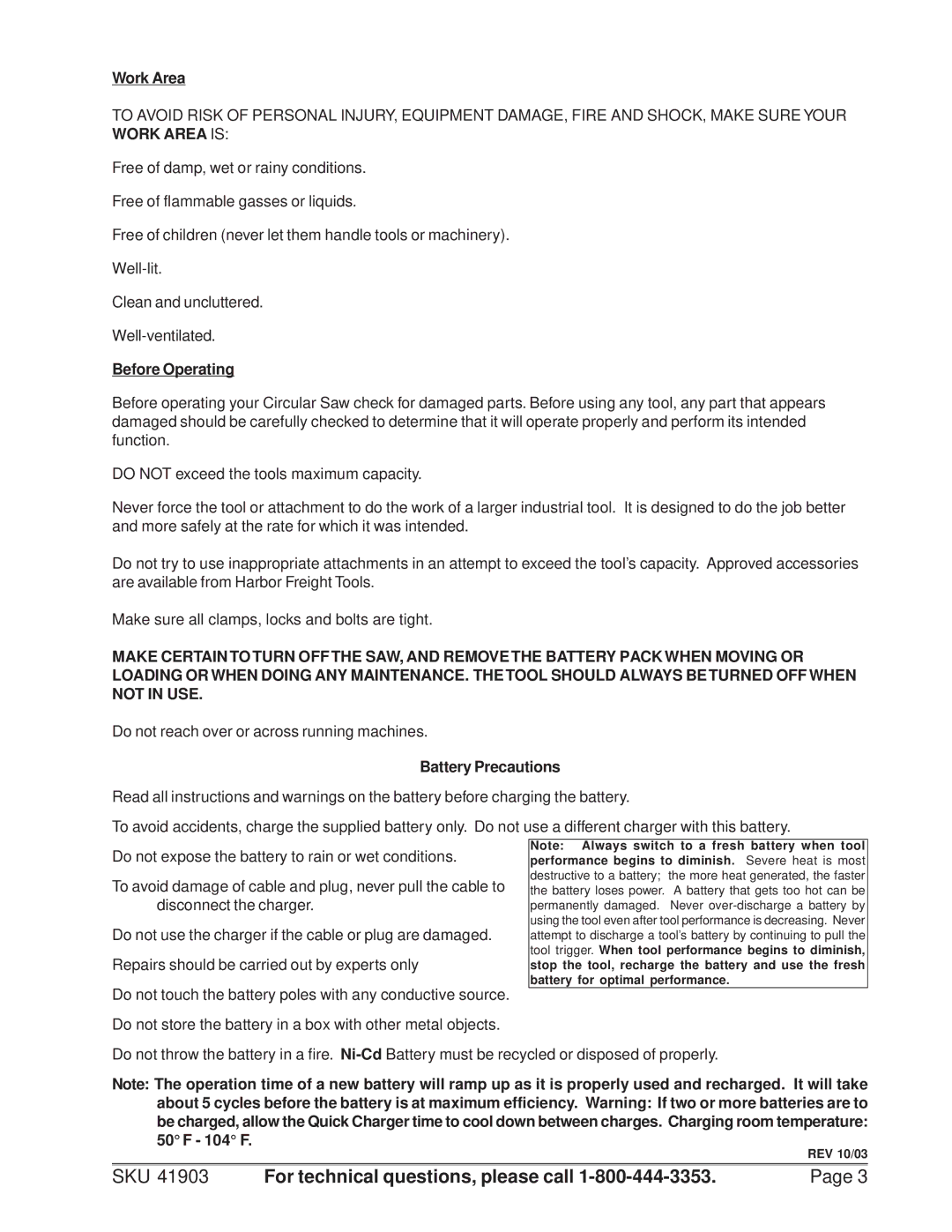
Work Area
TO AVOID RISK OF PERSONAL INJURY, EQUIPMENT DAMAGE, FIRE AND SHOCK, MAKE SURE YOUR WORK AREA IS:
Free of damp, wet or rainy conditions.
Free of flammable gasses or liquids.
Free of children (never let them handle tools or machinery).
Clean and uncluttered.
Before Operating
Before operating your Circular Saw check for damaged parts. Before using any tool, any part that appears damaged should be carefully checked to determine that it will operate properly and perform its intended function.
DO NOT exceed the tools maximum capacity.
Never force the tool or attachment to do the work of a larger industrial tool. It is designed to do the job better and more safely at the rate for which it was intended.
Do not try to use inappropriate attachments in an attempt to exceed the tool’s capacity. Approved accessories are available from Harbor Freight Tools.
Make sure all clamps, locks and bolts are tight.
MAKE CERTAIN TO TURN OFF THE SAW, AND REMOVE THE BATTERY PACK WHEN MOVING OR LOADING OR WHEN DOING ANY MAINTENANCE. THE TOOL SHOULD ALWAYS BE TURNED OFF WHEN NOT IN USE.
Do not reach over or across running machines.
Battery Precautions
Read all instructions and warnings on the battery before charging the battery.
To avoid accidents, charge the supplied battery only. Do not use a different charger with this battery. Do not expose the battery to rain or wet conditions.
To avoid damage of cable and plug, never pull the cable to disconnect the charger.
Do not use the charger if the cable or plug are damaged.
Repairs should be carried out by experts only
Do not touch the battery poles with any conductive source.
Do not store the battery in a box with other metal objects.
Do not throw the battery in a fire.
Note: The operation time of a new battery will ramp up as it is properly used and recharged. It will take about 5 cycles before the battery is at maximum efficiency. Warning: If two or more batteries are to be charged, allow the Quick Charger time to cool down between charges. Charging room temperature: 50° F - 104° F.
REV 10/03
SKU 41903 | For technical questions, please call | Page 3 |
